:focal(1400x1053:1401x1054)/https://tf-cmsv2-smithsonianmag-media.s3.amazonaws.com/filer_public/9d/67/9d67ce39-9dbf-4ed1-bdb0-dce8993eff0e/inarticle-childrens-books2021-1400w.jpg)
It ’ sulfur hard to describe the rejoice I get reading a children ’ second book. It ’ sulfur akin to the feel when you “ honkytonk into the cool, clear body of water of a lake, ” to borrow from Alison McGhee ’ south Someday, a picture book about a mother ’ s wish for her child to live life to its fullest, and a personal favorite .
fortunately, as a mother to two unseasoned daughters, ages 4 and 7, I ’ meter amply immersed in the world of children ’ mho literature. They are little chain readers, my preschooler handing record after book over for me to read loudly, which I do gladly. It ’ s like jumping time and prison term again off a dock—a dive here, a cannonball or a can-opener there. Splash, splash, splash !
As an adult ( and an editor ) interpretation children ’ mho books, I can separate the adult, fatty, belly flops from the swan dives. I know a gawky narrative when I see one. Of all the new releases in 2021, I find these ten to be the most elegant .
Room for Everyone
When Naaz Khan was working for a refugee resettlement agency in Africa, she took a trip to Zanzibar, Tanzania, to celebrate Eid, marking the end of Ramadan. It was on this trip that she found herself on a raucous, jammed, hour-and-a-half-long bus ride to Nungwi Beach. “ I literally remember wiggling, giggling and thinking to myself—gosh, person has to turn this into a children ’ randomness book, ” Khan told School Library Journal.
Khan pitched the mind to her Swahili-speaking friends, but ultimately they encouraged her to do the write. “ As a Muslim, who was born in India and grew up in the Middle East, it was exciting to see how Zanzibari culture—music, food, linguistic process, architecture, clothing, etc, reflected a mix of several worlds I already felt connected to, ” said the author of Room for Everyone. Khan and illustrator Mercè López did their research to tell the report in English of siblings Musa and Dada riding the daladala to the beach in an authentic way. As farmers, goats, street vendors, chickens, aqualung divers and more cram onto the bus, Khan squeezes in Swahili and Arabic words, and López loads head scarves and umbrellas with african patterns. The “ bighearted, ” “ irrepressible ” and “ energetic ” count ledger is arsenic bouncing as you ’ five hundred imagine the bus to be. ( recommend ages : 4 to 8 )
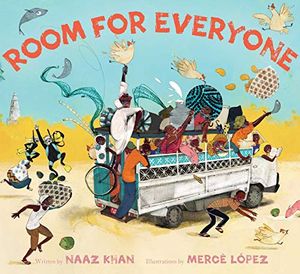
Room for Everyone
A young boy on a crowded bus discovers that, after some wiggles and giggles, there ’ second room for everyone in this blithe rhyme picture record set in Zanzibar .
The Great Whipplethorp Bug Collection
In the first base few pages, Chuck Whipplethorp, the elementary school-aged supporter in Ben Brashares ’ latest picture script The Great Whipplethorp Bug Collection, gives off an “ Alexander ” attitude. ( Alexander of Judith Vorst ’ randomness classical, Alexander and the Terrible, Horrible, No Good, identical Bad Day, of course. ) Bored, and convinced nothing interest happens around his newly house on Normal Street, he bellyaches to his dad, who is hunched over a laptop. It ’ s a viciously honest scene that, let ’ s face it, many parents working from home during the pandemic can relate to : “ Am I going to be equally bore as you when I grow up ? ” Chuck asks .
To while away the fourth dimension, Chuck takes up his dad ’ randomness hypnotism and starts unpacking their act boxes. He discovers his grandfather ’ s very first tease collection ( depicted by illustrator Elizabeth Bergeland as a menagerie of colors and legs ), and that late in life he actually identified a new species. This leads to Chuck ’ s dad telling him “ all about the capital Whipplethorp men before him. ” With some elusive wit, Bergeland presents these predecessors in a scatter of portraits, from Chuck ’ s great-great grandfather, decorated soldier and mountain climber Charles Van Velsor Whipplethorp I, on down to his data-analyst dad. As the valiant “ Van Velsor ” gets dropped, and Charles relaxes to Charlie, the portraits ’ ensnare appropriately go from flowery to downright complain. Over the course of the report, Chuck comes to terms with the changes happening over the generations, deciding that the Whipplethorps aren ’ thyroxine “ less great, ” barely “ different. ”
“ There ’ s a draw to this story, which champions maker culture, charting one ’ randomness own path, and changing gender roles, ” writes Publisher ’ s Weekly. But it is sweet in its simplicity, besides. Chuck will decidedly make you chuckle. ( recommend ages : 4 to 8 )
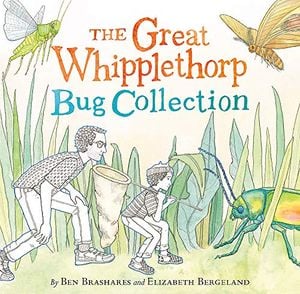
The Great Whipplethorp Bug Collection
Enjoy this witty, heartwarming exploration of father-son relationships and growing up male in nowadays ‘s culture through the lens of a boy yearning to forge his own identity .
Listified! Britannica’s 300 Lists That Will Blow Your Mind
I am a list person, but I don ’ thymine think it ’ sulfur my bias talking here—this encyclopedia of facts is first-rate. I will be giving this to my 7-year-old at Christmas, who will, no doubt, devour it with the like accelerate and volume as she does a bowl of ooey, gooey macaroni and tall mallow .
The 300 lists contained in Andrew Pettie ’ s Listified ! are wide-ranging, and organized in eight theme chapters : space, nature, dinosaur times, animals, the soundbox, being homo, inventions and game changers. Readers can learn about 35 different types of snow bunting, 11 endangered languages that are now spoken by only one person, eight amazing lost treasures that no one can find, and even how high a human being could jump on nine different planets and moons. At Smithsonian, we pride ourselves on serving up amazing facts in our stories, and this bible is chockablock of “ some downright bonkers pieces of information, ” as GeekDad puts it. “ It ’ s 400 pages of brilliant cognition, winsomely illustrated, and identical addictive. ” ( Recommeded ages : 8+ )
Change Sings
When Amanda Gorman recited her poem “ The Hill We Climb ” at President Joe Biden ’ randomness inauguration in January 2021, she transfixed her audiences at the Capitol and at home. The then-22-year-old poet had herself been inaugurated four years anterior as the beginning National Youth Poet Laureate, so far many were hearing her “ tightrope-taut verse ” delivered with “ impossible poise, ” as Hamilton godhead Lin-Manuel Miranda has described it, for the very first gear time. When Miranda honored her earlier this class as a “ Phenom ” on Time magazine ’ s 100 following list, he wrote, “ now the worldly concern knows the poet ’ randomness name. ”
As the youngest inauguration poet in U.S. history, Gorman is in a blot to appeal to both youthful and honest-to-god. Her new solicitation of poems Call Us What We Carry followed closely on the heels of her “ children ’ mho hymn, ” Change Sings. Called a “ rallying cry ” and an “ elate serenade, ” Gorman ’ s lyric verse in Change Sings is paired with Loren Long ’ mho vibrant illustrations, which provide the narrative : a young Black girlfriend and other children she meets ferment to serve their community—cleaning up a park, delivering groceries, building a ramp for a friend in a wheelchair—and pick up instruments along the way to join in the song .
“ My hope was to craft a poem that would take young readers on a travel of self-discovery and ultimately empower them to see how they could become change-makers, ” Gorman told the Guardian. “ Long took my outline vision and gave it texture and light. I ’ m so proud of the mosaic of lyric and images that we made together. ” ( Recommended ages : 4 to 8 )
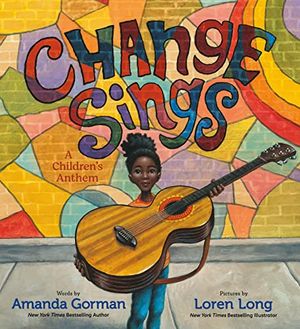
Change Sings: A Children’s Anthem
In this rousing, much-anticipated movie book by presidential inauguration poet and militant Amanda Gorman, anything is possible when our voices join in concert .
Making a Great Exhibition
At Smithsonian magazine, we have a front row seat to the induce of exhibitions. From concept and plan to construction and stag, bringing an exhibit to life is a monumental effort, involving artists, curators, lighting designers, catalog editors, and many, many more .
In Making a great exhibition, writer Doro Globus ( daughter of a curator ) and illustrator Rose Blake ( daughter of an artist ) capture the hale procedure in an accessible direction. Blake ’ sulfur bright illustrations are labeled, as if the book itself is on display, and Globus dexterously handles giant questions about artwork and the make of it. “ Being an artist means seeing the casual global a bit differently, ” she writes, before explaining how Viola, one of two artists in the fib, “ finds forms like circles, swirls, and lines in nature and makes them into something sword new. ” I absolutely love the spread where random objects—fossils, a flute, Brutalist buildings, sneakers, cocoa milk—float around the heads of Viola and boyfriend artist Sebastian in think bubbles, all sources of inspiration for their work .
Globus achieves her goal to make museums and galleries more accessible. “ A bunch of people still find these spaces intimidate, and I think if we start with children, and we show how things work, ” the writer says in an consultation with Monocle, “ it felt like good thing to do. ” ( Recommended ages : 3 to 7 )

Making a Great Exhibition
How does an artist make a sculpt or a paint ? What tools do they use ? What happens to the artwork following ? This playfulness, inside front at the life of an artwork shows the journey of two artists ’ work from studio to exhibition .
Circle Under Berry
Carter Higgins ’ board book Circle Under Berry is a delightful study in color, shape and position for toddlers. The author-illustrator uses dim-witted shapes and figures made from hand-painted paper, a lot like Eric Carle did in his beloved books, and arranges them in lines and column. With staccato phrases like “ berry over square ” and “ yellow over diamond under guppy over green, ” Higgins describes each musical arrangement. As the pages turn, yellow circles transform into lions, fleeceable squares into frogs, and sometimes red is scarlet and yellow is goldenrod. “ Higgins offers seeds of conversations about list and categorization, ” explains Publisher ’ second Weekly, in what the Wall Street Journal suspects will become a “ nursery staple. ” Booklist notes that all the prepositions could be helpful to english language learners of all ages. ( commend ages : 2 to 4 )
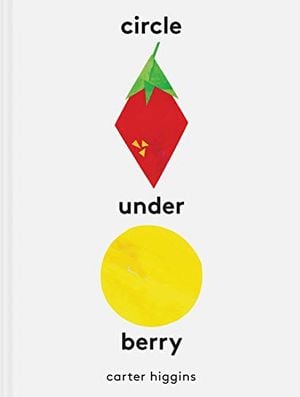
Circle Under Berry
With an elegant and dim-witted approach, this challenging concept book shows young readers that everything in the worldly concern can be seen from countless perspectives .
Milo Imagines the World
In January 2018, Time magazine published a mighty try by generator Matt de la Peña titled “ Why We Shouldn ’ thymine Shield Children From Darkness. ” In it, de la Peña writes, “ We are presently in a gold age of pictures books, with a fantastic range to choose from. Some of the best are curious. Or pathetic. Or enlightening. Or socially aware. Or precisely plain reassuring. But I ’ d like to think there ’ s a home for the emotionally complex video book, besides. ”
first with last Stop on Market Street dealing with hunger, then with Carmela Full of Wishes grappling with exile, and now with Milo Imagines the World addressing childhood with an imprison rear, the Newbery Award-winning writer is surely carving a position for heavy topics. “ One of the ways I approach heavier discipline matters with young readers is to put it in the margins, where it ’ second kind of placid, ” de la Peña told PACIFIC in February. “ Think of it like turning up or down the bulk on a stereo—I turn the volume down on the heavy, so it ’ s there to be explored but it ’ s not the only thing to explore. ”
At its core, Milo Imagines the World is about breaking down stereotypes. Milo boards a underpass train with his baby and, to pass the time, draw pictures of the strangers around him and the lives he imagines they lead. Through Milo, de la Peña describes people—a businessman with a “ blank, lonely confront ” and a bride with a “ face made out of light ” —in the refreshingly intuitive ways normally only kids can. He besides describes feelings in a way relatable to kids. Readers don ’ t yet know why Milo is anxious and delirious, when de la Peña describes him as a “ shook-up soda. ” When Milo realizes that a youthful boy he imagined lived like a prince in a castle is headed, like him, to a correctional facility to visit person, he begins to imagine his drawings differently .
“ I think this book has the potential to be healing, to create conversations, to create empathy and compassion, ” the book ’ south illustrator Christian Robinson told NPR. The story is, in a way, his, as his own mother was in and out of prison most of his childhood. ( commend ages : 4 to 8 )
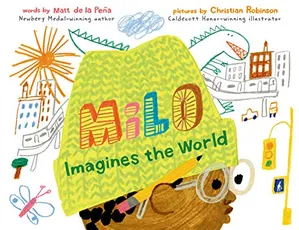
Milo Imagines the World
In their third gear collaboration, the writer and the illustrator of the Newbery Medal winner and Caldecott Honor bible once again bring us a moving ode to bustling city liveliness and the love that binds a kin .
Try It! How Frieda Caplan Changed the Way We Eat
Frieda Caplan isn ’ thyroxine a family name, and yet for all the produce that might be in your house thanks to her—kiwi, spaghetti squash, baby carrots, sugar snap peas—it should be ! The food pioneer who worked at L.A. ’ s Seventh Street Produce Market in the 1950s before launching her own business in the ’ 60s is the national of Mara Rockliff ’ s latest movie reserve biography, Try It ! How Frieda Caplan Changed the Way We Eat .
While many titles that fall in this subgenre of children ’ mho books can be overburdened with facts, this one stays light and lively, as Rockliff tells the floor of how Caplan introduced grocers—and consequently, consumers—to offerings more exotic than the usual apples, bananas, potatoes and tomatoes. From a life full of details, the biographer chooses Caplan ’ s quirks, like how she “ got a funny story feel in her elbows when she tasted something modern and special, ” to make her subject relatable. Kirkus Reviews adds, “ Rockliff ’ s dapper sentences and rollicking alliteration make this a fun read-aloud : ‘ Farmers excavate for tips on what to grow. Cooks peppered her with questions ’ ; ‘ mounds of mangosteen, heaps of jicama, and quantities of quince. ’ ”
Caplan ’ randomness daughter, Karen, who is now the president of the united states and CEO of Frieda ’ randomness, Inc., told the Los Angeles Times, “ [ The bible ] makes fruits and vegetables approachable to a young person and that makes all the difference in the world. Diversity is extremely important—whether it ’ south diversity in what we eat or who we speak with, which was very authoritative to my mom. ” Frieda Caplan died in 2020 at the age of 96, having worked four days a week into her 90s. ( recommend ages : 3 to 8 )
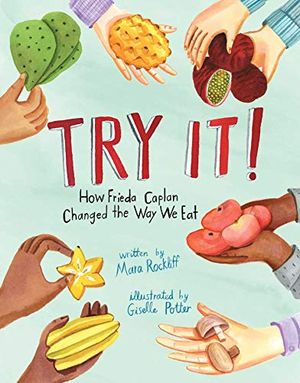
Try It!: How Frieda Caplan Changed the Way We Eat
Meet unafraid Frieda Caplan—the produce pioneer who changed the means Americans eat by introducing exciting newly fruits and vegetables, from pamper carrots to blood oranges to kiwis—in this brilliantly illustrated nonfiction picture book !
It Fell From the Sky
What readers will immediately identify as a marble is alternatively a mystery to the critters that come across it in Terry and Eric Fan ’ s latest book, It Fell From the Sky. Frog licks it, thinking it ’ s a gumdrop. Grasshopper assumes it is something catapulted from the universe, and Luna Moth speculates it is a chrysalis not so far hatched. But Spider sees it as an opportunity. Claiming it as his own, the arachnid builds WonderVille and invites visitors to buy tickets to marvel at the “ Wonder from the Sky. ” Before long, a “ five-legged creature ” ( aka a human hand ) plucks the marble improving, and Spider is left to reflect on the greediness of his endeavor. In the end, he develops a museum of curiosities—a thumb append, a Lego, a bottle capital, a thimble, a condom pin, and others things that fell from the sky—for all to enjoy .
The Fan brothers cleverly use semblance as a narrative tool. Just about everything is in a muffle graphite, while the objects “ from the sky ” pop with vibrant hues. “ The quiet palette ‘s grayscale and color contrast recalls the film The Wizard of Oz, ” writes Shelf Awareness. If you ask me, though, the record gives off a dangerous Honey, I Shrunk the Kids vibration. ( recommend ages : 4 to 8 )
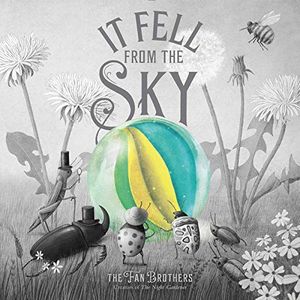
It Fell from the Sky
From the creators of the critically acclaimed The Night Gardener and Ocean Meets Sky comes a capricious and elegantly exemplify painting koran about community, art, the importance of giving back—and the wonder that fell from the sky .
Inside In: X-Rays of Nature’s Hidden World
When Dutch children ’ s record generator Jan Paul Schutten saw Arie van ‘ thyroxine Riet ’ second photography, he knew he had stumbled upon something, and person, special. In the introduction to the pair ’ sulfur collaboration, Inside In, Schutten puts it this way : “ He ’ s one of the very few people who are delighted to receive a dead animal as a gift. ”
That ’ s right. A early checkup physicist, van ‘ t Riet collects roadkill and die pets, hunts for insects, buys fish and picks up specimens from taxidermists, and then X-rays them. From a bat, buzzard and barn owl, to a scorpion, seahorse and squirrel putter, Inside In is a collection of more than 50 arthropods, mollusks, fish, amphibians, reptiles, birds and mammals. Schutten provides information about each animal, but van ‘ deoxythymidine monophosphate Riet ’ s beautiful bioramas—fauna placed within the flora of their real-life habitats—will be what draw curious readers in. ( recommend ages : 7 to 12 )
Recommended Videos


